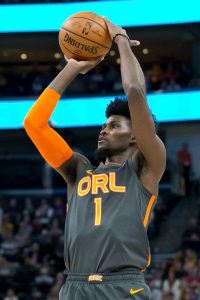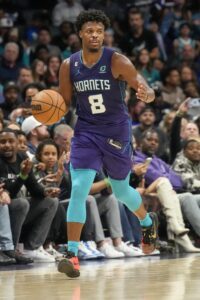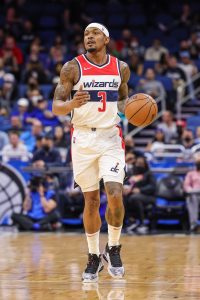For the rest of the regular season and postseason, Hoops Rumors is taking a closer look at players who will be free agents or could become free agents during the 2023 offseason. We consider whether their stock is rising or falling due to their performance and other factors. Today, we’re focusing on a handful of Atlantic players.
Fred VanVleet, G, Raptors
- 2022/23: $21,250,000
- 2023/24: $22,824,074 player option
- Stock: Down
VanVleet was a deserving first-time All-Star last season, averaging 21.6 points, 4.6 rebounds, 7.0 assists and 1.6 steals on .419/.401/.874 (.572 true) shooting through 50 games. However, he struggled mightily after the break due to a lingering bone bruise in his right knee, appearing in just 15 games with averages of 16.0 points, 3.9 rebounds, 5.7 assists and 1.9 steals on .343/.291/.872 (.479 true) shooting. He was clearly hampered in the playoffs as well, posting similar shooting percentages.
In the offseason, he and the Raptors discussed a four-year, $114MM extension – the maximum amount they can offer based on his current contract. VanVleet felt he had outplayed his four-year, $85MM deal to that point, so he wanted to wait and see if he could get a more lucrative contract in 2023.
I definitely understand why VanVleet bet on himself. The former undrafted free agent has turned himself into a very good player through his hard work, tenacity and determination. He was also a major part of the Toronto’s title-winning team in 2019.
Unfortunately, things haven’t gone according VanVleet’s plan thus far in 2022/23. A significant portion of his offensive game is tied to his ability to space the floor, but he’s shooting just 32.9% from three, compared to his 37.5% career mark.
VanVleet turns 29 next month, is undersized, has played a ton of minutes the past few years, his point-of-attack defense isn’t what it once was, and he missed an average of just over 18 regular season games from 2018-22. VanVleet’s leadership and competitiveness are unquestioned, but there are a lot of red flags for potential suitors if he declines his player option, which seems likely.
T.J. Warren, F, Nets
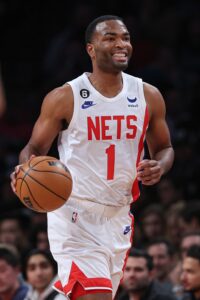 2022/23: $2,628,597
2022/23: $2,628,597- 2023/24: UFA
- Stock: Up
Warren is another player with an injury history, having appeared in just four games in the two seasons leading up to ‘22/23. While the length of those absences was abnormal, the 29-year-old has never appeared in more than 67 games in a season, averaging just under 55 games in his first six years, so durability has always been a concern.
As a free agent last summer, Warren wound up signing a “prove it” deal with the Nets for the veteran’s minimum, and it took him a while to return to action — he made his season debut on December 2. However, he has only missed one game since (the second of a back-to-back), and his production hasn’t disappointed.
Warren has always been a mid-range sniper, and this season is no different – he’s shooting 52% on those looks, which ranks in the 93rd percentile of all players, per DunksAndThrees.com. Through 17 games, he’s averaging 10.5 points, 3.1 rebounds and 1.4 assists on .532/.353/.889 shooting in 20.4 minutes per contest.
As long as Warren stays healthy, there’s a very good chance he’ll get a big raise in free agency — his ability to score from all over the court is the most valuable trait in basketball.
Grant Williams, F, Celtics
- 2022/23: $4,306,281
- 2023/24: RFA
- Stock: Up
Williams and the Celtics couldn’t agree on a rookie scale extension prior to the season, with the 24-year-old reportedly looking for more money than the cost-conscious Celtics were willing to offer. Betting on himself in restricted free agency has been a worthwhile gamble for Williams so far.
Although his averages of 9.0 points, 4.7 rebounds and 1.7 assists per game are all career highs, those numbers don’t jump at you. But he’s a solid defender across the three frontcourt positions and is highly efficient, posting a .504/.404/.859 (.659 true) shooting line through 42 games (16 starts, 28.0 MPG).
If he maintains his top-tier efficiency, Williams might get more than he was reportedly seeking before the season, which was in the $14-16MM range annually.
Derrick Rose, G, Knicks
- 2022/23: $14,520,730
- 2023/24: $15,596,339 team option
- Stock: Down
The former league MVP has been plagued by injuries throughout his career, but he’s actually been relatively healthy in ’22/23. The problem is, he just hasn’t been effective on the court, averaging career lows in minutes (12.9), points (5.8) and FG% (.394) through 26 games.
Long a favorite of head coach Tom Thibodeau, Rose has fallen out of the Knicks’ rotation. His $14.5MM contract has negative value on the trade market, and his team option for ’23/24 is essentially a lock to be declined at this point.
Unless there’s a dramatic turnaround, the 34-year-old is probably looking at a veteran’s minimum deal in the offseason. Considering his age and injury history, even that might not be a given.
Shake Milton, G, Sixers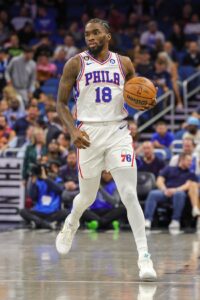
- 2022/23: $1,997,718
- 2023/24: UFA
- Stock: Up
Milton is an interesting player. He’s a subpar defender who isn’t a great athlete by NBA standards, but he finds effective ways to work around those limitations.
He impressed as a fill-in starter when Tyrese Maxey and James Harden were injured, averaging 20.9 points, 5.1 rebounds and 6.1 assists on .542/.425/.967 (.652 true) shooting in nine games (38.0 minutes). While those shooting percentages are an anomaly, given his career averages (.457/.361/.822 splits, including .557 true), Milton is a patient and crafty pick-and-roll play-maker who has plus size (6’5″, 205 pounds) for a combo guard.
The former 54th overall pick initially signed a two-way deal and then was converted to a standard four-year, $7MM contract back in 2019. He’s only 26 years old, and has certainly outperformed his current deal. Something in the $5-8MM per year range seems within reach.
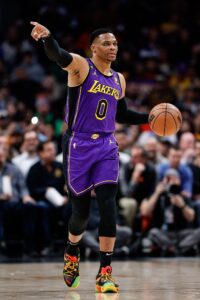 2022/23: $47,063,478
2022/23: $47,063,478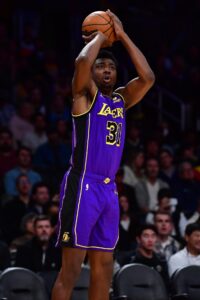 2022/23: $2,133,278
2022/23: $2,133,278